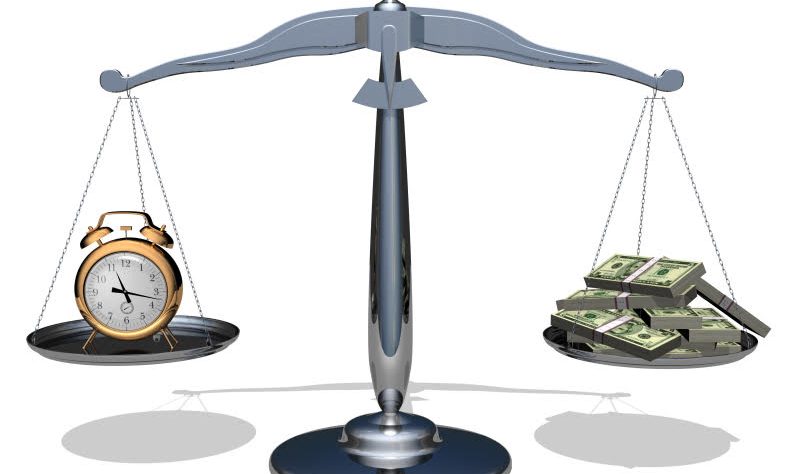The Relationship Between Employee Compensation and Job Performance in Private University
in Erbil, Kurdistan.
Karwan Talaat Rashid
Business and Management Department, Tishk International University, Erbil, Iraq
Email: [email protected]
Doi:10.23918/icabep2018p15
In today’s competitive business environment, the compensation considers one of the important factors for motivating, promoting and employee’s talent a part of human resources management. The main purpose of this study is to measure the relationship between employee compensation and organizational performance at private universities in Erbil, Kurdistan. The researchers used quantitative method to analyze the current study. The researchers distributed 100 questionnaires but only 73 questionnaires were received and being completed properly. The results revealed that there is a weak but positive relationship between compensation and organizational performance as seen in table (6) the value of Beta =.439 which is greater than 0.01 accordingly the research hypothesis supported. The major research limitation of this study is that the study covered only one private university also small sample size; it would give better result with higher sample size.
Nowadays, In Every business, compensation is one of the important Factors for motivating, promoting and employee’s talent a part of human resources management (Sajid Tufail, 2015). Because in the compensation package is the essential acquirable in affecting implementation, evolving and sustaining the human resources to get the actual result from them. That is contains the variety, manipulate, development and direction of packages designed to implement compensation or incentive through monetary rewards (Tarus Kipkorir Erick, Basweti Aboko Kefah, Richard Bitange Nyaoga, 2014). Wages or salaries refer to the establishment in operation strategies and performs of employee compensation. In traditional thought the wages, salaries emphasized only purpose of salary and wages in organization settings. But incentives or rewards are changing these adjustments to add other payments for controlling the compensation costs. In easy defining the compensation “Compensation is efficient process for completing the structure or enhances the employee of rewards and motivating to performing better” (Alemu, 2015). In term of human resources, compensation is mentioned to as money or other benefits which is received by the employees for providing the outcomes and services to their organization. Salary and wages administration are knowing as management of compensation. Because the compensation may contain of rewarding to pushing or motivating the employee to allocate their tasks, or that is instrument to promotion the value by organization use (Gashaw Tenna, 2015).
Monitory Compensation Rewards, bonuses, commission, profit sharing, bank receiving, and any other cash payments are monetary compensation (Tarus K. Erick, 2014). In many of the organizations according to (Sidra Rafique, 2015) they used the monetary compensation is the way to easily recognize the employees which is directly can compensate to provide cash payment and physiologically attracting the new employees to enhance them to increase the outcomes and productivity. In monitory compensation from management plan is to attention of reducing possible conflict individual interests between employees the managers because as (Gashaw Tenna, 2015) says in monitory Compensation packages can directly add value such as payment and awarding employees within the organization by improving the management since the objective to maximize outcome and profits.
Conceptual framework Research model
The study objective identifies concepts of compensation and job implementation that provides the valuable figures about the practical level in different operational environments. The research review tried to understand is there positive relationship between compensation and organizational performance in private universities.
- How the Compensation must be enough so that needs of the employees are fulfilled substantially.
- When Compensation must increase the level of motivation and job satisfaction of the employees.
- Compensation policy should be declared in such a way so that no discrimination can be observed.
- The organization must make a balance between cost for giving compensation and benefits to be accrued from the employees.
This study aimed to investigate the relationship between employee compensation and organizational performance in private university in Erbil, Kurdistan. The researcher used quantitative method to analyze the current study. The researcher distributed 100 questionnaires but only 73 questionnaires were received and being completed properly. The questionnaire consisted into two parts; the first section consisted of demographic analysis starting with participants’ gender, age, and marital status, level of education, position and experience. The second section of questionnaire consisted of 13 questions regarding of employee compensation and 16 questions regarding of organizational performance (as seen in the appendix A). The questionnaire adapted from (Soleimani, et al.,2013; Shahzad, et al., 2008).
| Item | Frequency | Percent | |
|
Gender |
Male | 47 | 64.4 |
| Female | 26 | 35.6 | |
|
Age |
20-25 | 32 | 43.8 |
| 26-30 | 13 | 17.8 | |
| 31-35 | 16 | 21.9 | |
| 36-40 | 7 | 9.6 | |
| 41-45 | 2 | 2.7 | |
| 46-50 | 1 | 1.4 | |
| 51-55 | 2 | 2.7 | |
|
Marital Status |
Married | 40 | 54.8 |
| Separated | 1 | 1.4 | |
| Widowed | 3 | 4.1 | |
| Single | 29 | 39.7 | |
| Education | Bachelor | 39 | 53.4 |
| Master | 31 | 42.5 | |
| PhD | 3 | 4.1 | |
| Position | Employee | 24 | 32.9 |
| Research Assistant | 20 | 27.4 | |
| Lecturer | 29 | 39.7 | |
| Experience | Less than one | 34 | 46.6 |
| 1-3 | 17 | 23.3 | |
| 4-5 | 10 | 13.7 | |
| 6-8 | 8 | 11.0 | |
| 8+ | 4 | 5.5 |
Table 24- Reliability Statistics
| Cronbach’s Alpha | N of Items |
| .818 | 29 |
The Cronbach’s Alpha for 29 items = .818 which is greater than .6 this indicates that 29 items used
in this study were reliable (as seen in table 2).
Table 25- Correlations Analysis
| Pearson Correlation | compensation | Performance | |
| compensation | Pearson Correlation | 1 | .439** |
| Sig. (2-tailed) | .000 | ||
| N | 73 | 73 | |
| Performance | Pearson Correlation | .439** | 1 |
| Sig. (2-tailed) | .000 | ||
| N | 73 | 73 | |
| **. Correlation is significant at the 0.01 level (2-tailed). | |||
Table (3) shows the correlation analysis between employee compensation as independent variable and organizational performance as dependent variable. The Pearson correlation value = .439** which is greater than 0.01 this indicates that there is a positive and weak correlation between employee’s compensation and organizational performance.
Table 26- Model Summary
| Model | R | R Square | Adjusted R Square | Std. Error of the Estimate |
| 1 | .439a | .193 | .181 | .48844 |
| a. Predictors: (Constant), compensation | ||||
R Square (table 4) is .193 this indicates that 19% of the variables are explained.
Table 27- ANOVAa
| Model | Sum of Squares | df | Mean Square | F | Sig. | |
| 1 | Regression | 4.038 | 1 | 4.038 | 16.926 | .000b |
| Residual | 16.939 | 71 | .239 | |||
| Total | 20.977 | 72 | ||||
| a. Dependent Variable: Performance | ||||||
| b. Predictors: (Constant), compensation | ||||||
Table (5) shows F value = 16.926 which means there is positive and weak association between compensation and organizational performance.
Table 28- Coefficientsa
| Model | Unstandardized Coefficients | Standardized Coefficients | t | Sig. | ||
| B | Std. Error | Beta | ||||
| 1 | (Constant) | 1.963 | .389 | 5.046 | .000 | |
| compensation | .463 | .113 | .439 | 4.114 | .000 | |
| a. Dependent Variable: Performance | ||||||
Table (5) shows a single regression analysis; the beta value =.439 which is more than 0.01, this indicates that there is a positive but weak relationship between organizational performance and employee compensation.
The research outcome that is found the compensation has weakly correlated with organizational performance at private university in Erbil. According to multiple regression analysis; the results revealed that there is a weak but positive relationship between compensation and organizational performance as seen in table (6) the value of Beta =.439 which is greater than 0.01 accordingly the research hypothesis supported. The major research limitation of this study is that the study covered only one private university also small sample size; it would give better result with higher sample size. And the study analysis identifies the research objectives and questions get supported which is the Compensation must be sufficient so that needs of the employees are fulfilled substantially, Compensation must increase the level of motivation and job satisfaction of the employees, Compensation policy should be declared in such a way so that no discrimination can be observed and The organization must make a balance between cost for giving compensation and benefits to be accrued from the employees. Because, in the Table (3) shows the correlation analysis between employee compensation as independent variable and organizational performance as dependent variable. The Pearson correlation value = .439** which is greater than 0.01 this indicates that there is a positive and weak correlation between employee’s compensation and organizational performance. R Square (table 4) is .193 this indicates that 19% of the variables are explained. Table (5) shows F value = 16.926 which means there is positive and weak association between compensation and organizational performance and shows a single regression analysis; the beta value =.439 which is more than 0.01, this indicates that there is a positive but weak relationship between organizational performance and employee compensation.
Sajid Tufail, M. S. (2015). An Empirical Study of Relationship between Compensation, Working Environment and Motivation of Employees in Banking Sector of Pakistan. Journal of Marketing and Consumer Research Vol.6 No.1, 86.
Tarus Kipkorir Erick, Basweti Aboko Kefah, Richard Bitange Nyaoga. (2014). The Relationship between Executive Compensation and Financial Performance of Insurance Companies in Kenya. Research Journal of Finance and Accounting, 114115.
Alemu, G. T. (2015). Land Expropriation and Compensation Payment in Ethiopia: Review. Journal of Economics and Sustainable Development Vol.6, No.13, 94.
Gashaw Tenna. (2015). Land Expropriation and Compensation Payment in Ethiopia: Review. Journal of Economics and Sustainable Development Vol.6, No.13, 94.
Tarus K. Erick, B. A. (2014). The Relationship between Executive Compensation and Financial Performance of Insurance Companies in Kenya. Research Journal of Finance and Accounting Vol.5, No.1, 115.




